Apple iPhone 13 Review – Pros and cons, Verdict | 91Mobiles
The iPhone 13 (first impressions) isn’t a radical departure from Apple’s iPhone 12 launched last year – I guess you could say that the ‘Apple’ doesn’t fall too far from the tree. Jokes aside, the smartphone improves upon its predecessor in a number of meaningful yet inconspicuous ways. Be it the phone’s beefier battery backup or its class-leading performance and improved cameras, the iPhone 13 packs a lot for a phone that doesn’t have a ‘Pro’ in its name. Of course, as is the case with any Apple product, the iPhone 13’s pricing isn’t for the faint of heart. What’s more, the iPhone 12 (review) is currently discounted across various e-commerce portals which begs the question – is the iPhone 13 worth it? More importantly, should you buy it over the iPhone 12? Well, let’s find out in this review.
Verdict
There’s no doubt that the iPhone 13 is an extremely capable phone that scores high on almost all key aspects – especially performance, cameras, and battery life. It’s a fantastic pocket shooter, and the addition of features like the new Cinematic mode add to its prowess. Its predecessor, the iPhone 12 also makes for a great buy, provided you can get a good deal on it, but otherwise, the iPhone 13 looks like a solid option.
Design
Every year, Apple has to bear the brunt of jokes revolving around the similarities in design between the current and previous-gen iPhone models. To the company’s credit, Apple did introduce some visual tweaks to the design of the iPhone 13 lineup, though from a distance, you’d still be hard-pressed to tell the iPhone 13 from the iPhone 12. To that note, the iPhone 13 is available in unhackneyed colours including the pinkish hue sent to me for review. What’s more, this time around, the camera sensors towards the back have been positioned diagonally. Per the brand, Apple had to realign the camera stack to make room for the bigger sensors on the iPhone 13. Be that as it may, the transposed camera sensors look really nice and I prefer them over the vertically aligned stack on the iPhone 12.
Moving on, the iPhone 13 series also touts a smaller notch. To put it in numbers, Apple claims that the newer phones ship with a 20 percent smaller display cavity which might not seem much at first. However, in actuality, the difference is quite substantial. Unfortunately, you can’t really make the most of the added screen real estate as of yet – I do hope Apple goes back to the drawing board and figures out a way to cram more info up top like say, a battery percentage indicator?

I’d also like to add that the iPhone 13 is a tad chunkier and weighs in at around 10 grams more than the iPhone 12, which can be accredited to the handset’s beefier battery. Be that as it may, the iPhone 13 feels superbly premium to hold and the added heft bettered my in-hand grip too. Moreover, much like the iPhone 12, the iPhone 13 also touts a ceramic shield coating upfront and the device is IP68 certified as well. Regardless, I’ll urge prospective buyers to still use the phone with a case as the phone’s glossy back is quite slippery. Moreover, the handset’s colour-matched aluminium frame is prone to smudges too, so slapping a case on the phone should keep your OCD at bay.
On the whole, Apple has done a good job with the design of the iPhone 13. It’s not a drastic visual overhaul but if it ain’t broke, don’t fix it, amirite?
Display and Audio
High-refresh rate screens on iPhones have been a long time coming and this year, Apple finally introduced adaptive 120Hz OLED displays with the iPhone 13 Pro and the iPhone 13 Pro Max. Unfortunately, those eyeing the iPhone 13 will still have to contend with a 60Hz screen which, for the most part, is similar to the display on the iPhone 12. In fact, barring the typical brightness (800 nits vs 625 nits), the iPhone 13 and the iPhone 12’s screens are neck and neck – they both measure in at 6.1-inches, offer 2,532 x 1,170-pixel resolution, support HDR playback and are backed by OLED technology.
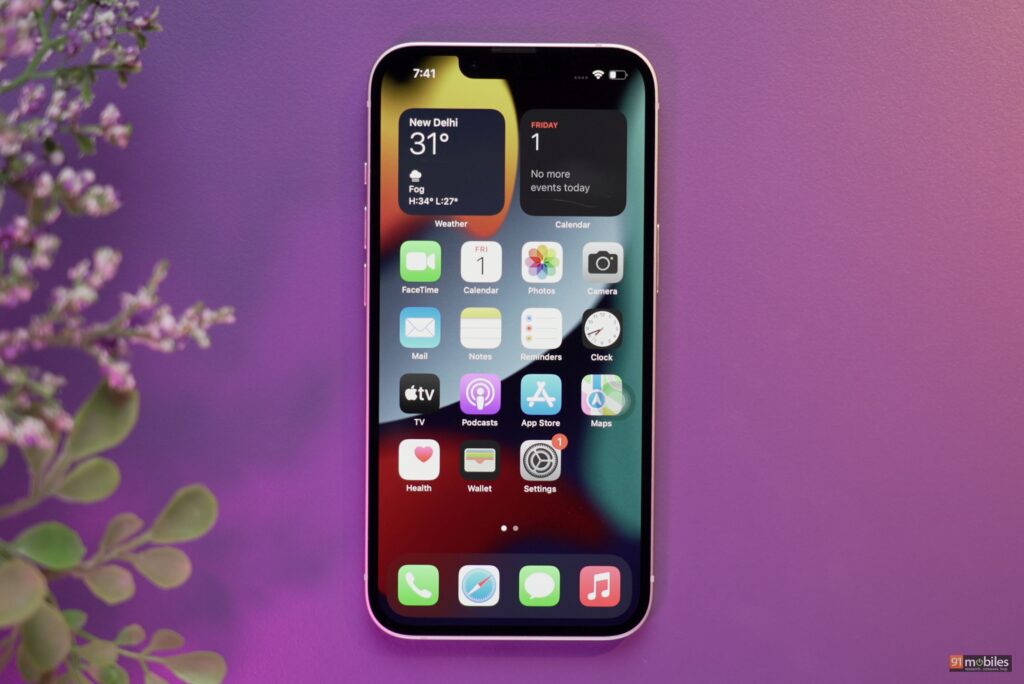
Despite the lack of a high refresh rate screen, the iPhone 13’s display is top-notch (no pun intended) and the panel touts ample brightness, offers excellent viewing angles and vibrant hues, ensuring you have a gala of a time watching shows on the phone. What’s more, the smartphone features a dual-speaker setup that gets fairly loud and elevates the movie-watching experience on the phone.
Camera comparison with iPhone 12
Contrary to popular belief, the iPhone 13’s camera prowess isn’t leagues ahead of the iPhone 12. Don’t get me wrong – the iPhone 13 is the better shooter, but the smartphone outperforms its predecessor by a narrow margin. Spec-wise, the device gets a pair of 12MP shooters comprising a wide and an ultra-wide lens. For selfies, the handset gets a 12MP front-facing camera.
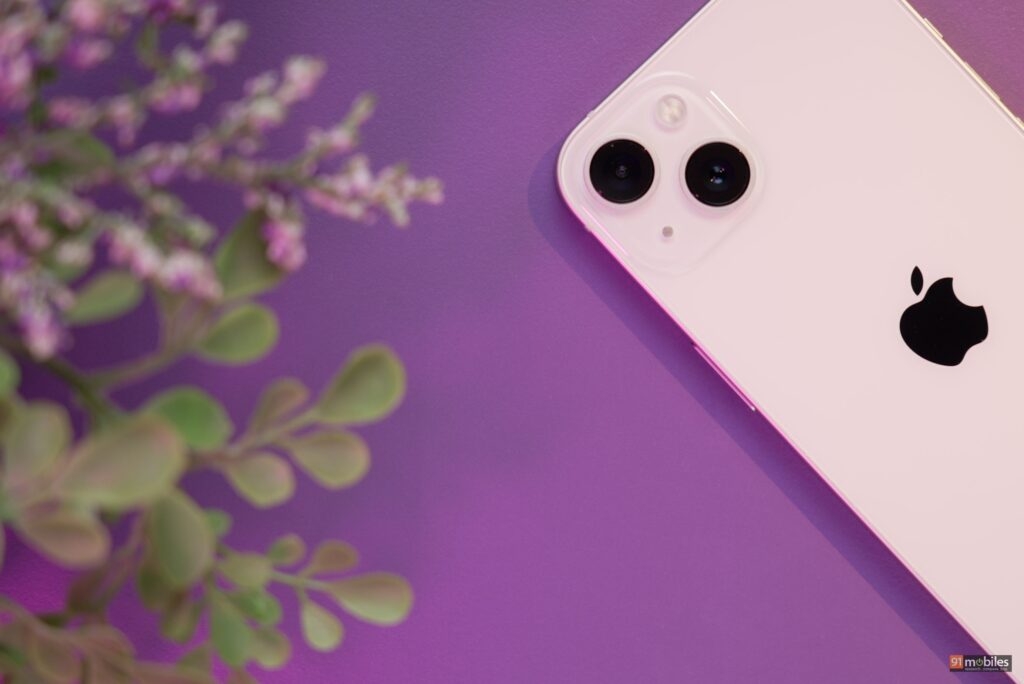
The iPhone 13 is a fantastic camera phone and I noticed that the smartphone would outclass its predecessor mainly in terms of sensor details. In a nutshell, almost every shot from the iPhone 13 was sharper at a closer crop. Other than that, the photos from the two phones are neck and neck and the shots only exhibit slight differences in the colour temperature that can be accredited to iPhone 13’s Smart HDR 4 technology. Consequently, you’ll notice that the iPhone 13 tends to keep a better lid on the noise and outputs photos with slightly warmer skin tones.


As an example, if you look at the comparison slider attached above, then you’ll notice that the two photos look near-identical. However, the iPhone 12’s photo exhibits a bluer sky and a darker shade of green around the leaves of the trees too. What’s more, at a closer crop, you’ll be able to make out more graininess in the iPhone 12’s shot and it’s evident that the sensor has struggled to mitigate the noise around the objects in the background. Moreover, the iPhone 13’s still has much sharper and distinctive definition around the edges of the leaves which is evident if you pan to the centre of the frame and zoom in on the tree near the awning.


Let’s take a look at another example. Now, if you pay attention to the slider attached above, then you will be able to make out the blue tinge in the sky in the iPhone 12’s shot yet again. What’s more, at a 100 percent crop, the brown tree in the background appears slightly sharper on the iPhone 13’s composition. Moreover, there’s less noise around the leaves of the big tree in the middle of the frame too. Understandably, the differences in the shots aren’t night and day and you’ll have to pixel-peep to find flaws in the iPhone 12’s photos.


The same is true for photos snapped with the phones ultra-wide angle sensors too. In fact, if you turn your gaze to the slider above, then you’ll observe that the objects in the iPhone 13’s wide-angle image retain better definition at a closer crop. Moreover, the handset exposes shadows slightly better too and I could make out the brown colour of the trunk better in the 13’s photo too. I’d like to reiterate – the photos from the iPhone 12 are quite good, albeit fall a little shy of the iPhone 13’s stellar output.


The closeups from the two phones are near-identical too. Take the shot of the orange flower, for instance, which exhibits a warmer tone in the iPhone 13’s photo. Other than that, the images are like two peas in a pod and offer similar sharpness across the board. Heck, even the mapping for the bokeh effect is the same in the two photos.


I hate to sound like a broken record, but the selfies snapped from the iPhone 13 are quite similar to the ones shot from the iPhone 12 as well. To the iPhone 13’s credit, the handset has reciprocated my skin tones slightly better as my face is more ‘orange’ in the iPhone 12’s snap. In fact, the skin tone disparity is more evident in portrait images. Speaking of which, the bokeh effect in portrait shots is the same across the two models too. The iPhone 13 also takes the lead when clicking lowlight selfies and images shot from the phone offer more details and significantly less noise too.


Apple claims the iPhone 13’s main wide sensor can take in 47 percent more light, which should – at least in theory – improve the lowlight stills snapped by the phone by quite some margin. In actuality, the differences between the iPhone 12 and the iPhone 13’s lowlight photos are quite nominal. During my testing, I noticed that the newer iPhone had a slightly sharper output with less noise. More importantly, the iPhone 13 has a much better lid on lens flaring, which is also evident in the slider attached above wherein, you will be able to see unnecessary reflections in the iPhone 12’s shot.
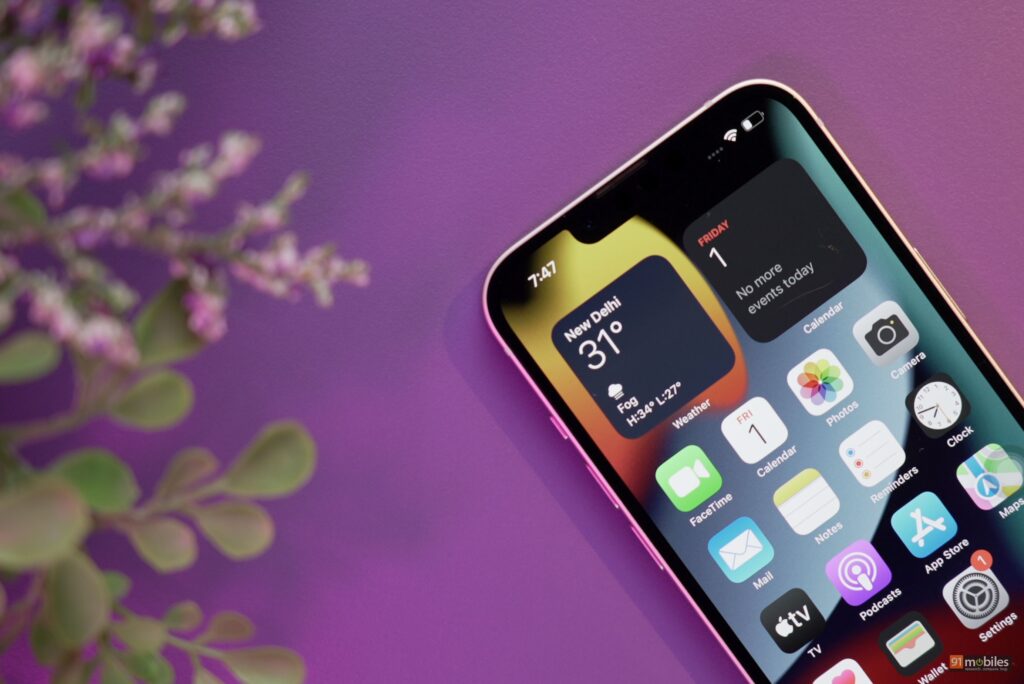
Of course, there’s a lot more than meets the eye when it comes to the iPhone 13’s camera chops. For instance, unlike the iPhone 12, the iPhone 13 ships with a bunch of photographic styles that allow you to click images with different colour tones and aesthetics. I’d also like to add that unlike a phone’s predefined filters, the photographic styles bundled with the iPhone 13 tap directly into the phone’s image processing. Consequently, unlike a half-baked filter, a photographic style would accentuate certain characteristics of a shot.
For instance, the ‘Vibrant’ style has little to do with increasing the vibrancy in the scene. Instead, it will darken the shadows and increase the contrast in the frame to give you a more Pixel-esque shot. What’s more, you can even tweak the strength of these styles before snapping a photo, which is neat. To illustrate the same, you can refer to the slider attached above wherein, I’ve snapped images in the order of the following photographic styles – Standard -> Vibrant -> Warm -> Cool. Do let me know which aesthetic you like the most in the comments below.
The iPhone 13 also ships with a Cinematic mode which smartly variates the focus between different subjects in the frame. The feature works quite well and Apple even allows users to variate the focus points after the video has been shot, which is fantastic. That said, the footage is capped at 1080p30fps.
Performance and Software
On to the performance and here, the iPhone 13 ships with the fastest mobile chip from Apple in the form of the A15 Bionic SoC. To that note, the A15 is an extremely capable silicone and the SoC features a new six-core CPU as well as a new four-core GPU. However, you won’t notice any difference in performance unless you’re upgrading from an iPhone that’s at least two-three generations old. Of course, the iPhone 13 will bench higher in synthetic tests but the day to day performance of the handset will be indistinguishable from say, the iPhone 12 which features the A14 Bionic SoC.
That doesn’t take anything away from the A15 Bionic’s brilliant performance, mind you and I could run all my favourite games at the best possible presets on the phone. What’s more, despite playing games on the phone for hours on end, the temps didn’t skyrocket and I didn’t notice any frame drops either. The phone’s day to day performance was exceptional too and I could comfortably hold around a dozen apps in memory. The animations felt quite fluid and the UI didn’t abruptly freeze or jitter when I was jumping back and forth between various apps and games, which is great.

As for software, the iPhone 13 ships with iOS 15 out of the box. In all honesty, iOS 15 doesn’t bring a lot of upgrades over iOS 14 and the two interfaces draw parallels in terms of the overall look and feel. However, you do get new focus modes on iOS 15 that could come in handy for fickle-minded users. You also get support for browser plug-ins in Safari, and the app’s UI has been tweaked a bit too. That said, my favourite addition has to be the Live Text feature which, in a nutshell, allows you to copy text digitally by pointing your phone’s camera at it. The feature works stupendously well and I’m sure it will be a godsend for college-goers. Another notable addition is the ability to mask your email address from within the iCloud settings – all good stuff, really.
Battery Life and Connectivity
I wasn’t expecting much from the iPhone 13 in the battery department – after all, history hasn’t been kind to small form-factor devices with powerful SoCs. That said, I was pleasantly surprised by the iPhone 13’s battery backup and the smartphone comfortably saw me through the end of a heavy workday and had plenty of juice in the tank by the time I hit the bed. In fact, I was netting close to seven hours of screen-on time with the phone, which is nuts. Unfortunately, the handset’s charging speeds are nothing to write home about and competing Android handsets have a slight edge there.
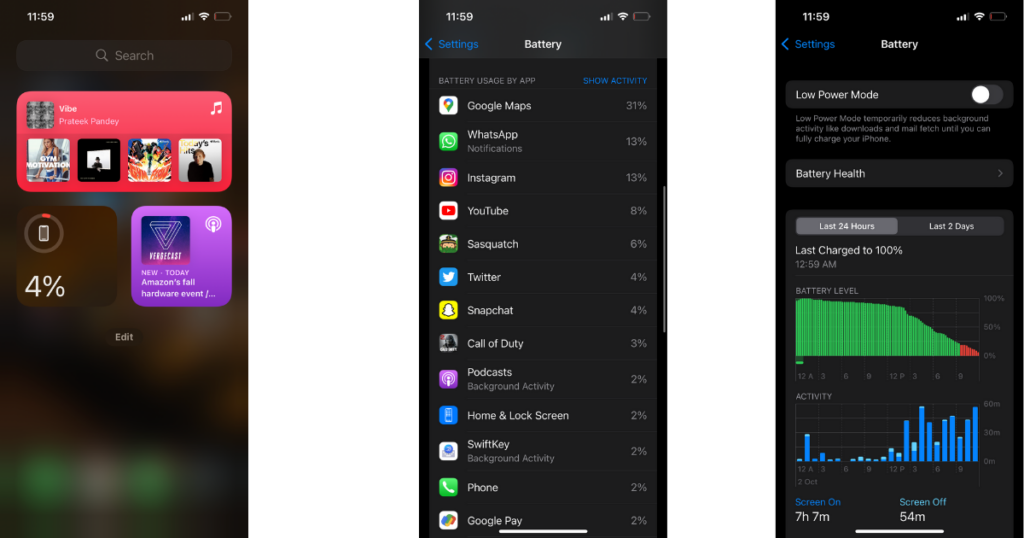
I have no qualms with the iPhone 13 in the connectivity department either. The smartphone relayed calls clearly and net passable download and upload speeds on my Airtel 4G SIM. It also helps that the device is 5G-ready, so you should be able to make the most of the upcoming 5G boom as well.
Final Verdict
The iPhone 13 starts at Rs 79,900 and for the price, brings a lot to the table including a gorgeous display, excellent performance, capable cameras and class-leading battery life. That said, the iPhone 12 is no slouch either and it is neck and neck to the newer model in most, if not all of the aforementioned parameters. What’s more, the iPhone 12 is heavily discounted right now owing to the ongoing Flipkart Big Billion Days sale. In fact, buyers can pick up a 128GB iPhone 12 for as little as Rs 57K, and that’s without slapping any additional bank offers.
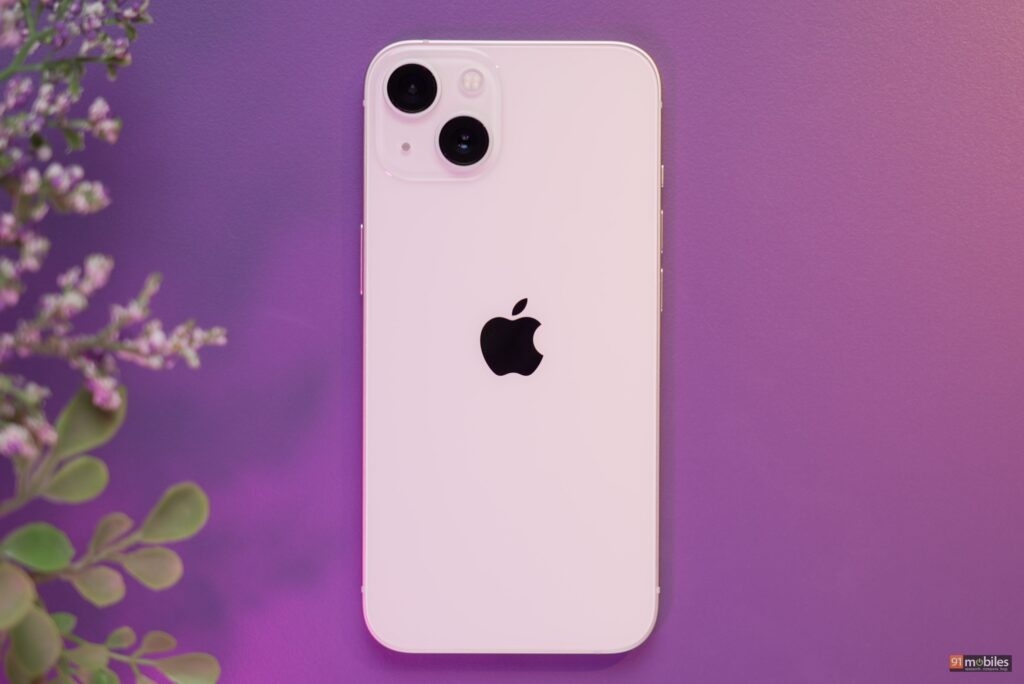
Consequently, if you were looking to get into the Apple ecosystem by purchasing a brand-new iPhone, I’d say your money would be better spent on the iPhone 12, at least during the sale period. Once the price bounces back to say, 71K (as listed on Apple’s website for the 128GB model), you’d be better off with the iPhone 13.
Editor’s rating: 4 / 5
Pros:
- Excellent performer
- Capable cameras
- Long-lasting battery backup
Cons:
- Slow wired and wireless charging speeds
- No high refresh rate screen
For all the latest Technology News Click Here
For the latest news and updates, follow us on Google News.
